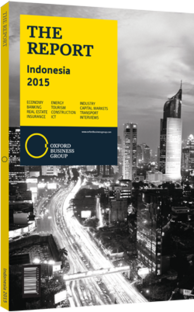Protecting and developing Indonesia's fisheries
As the largest archipelago country in the world with more than 17,500 islands, Indonesia has both huge potential and abundant wealth lying within its territorial waters. Looking to tap into this potential, newly-elected President Joko Widodo has so far placed a high degree of emphasis on marine industry and security, stating in his inaugural speech in October 2014 that, “the time for us is to return to make Indonesia a maritime nation … to be as great in the oceans as our ancestors were in the past”.
Maritime Security
While this emphasis has strong connotations towards bolstering the country’s naval prowess (Widodo also quoted the Indonesian navy mantra “Jales Veva Jaya Mahe”, which means “In the water, we are triumphant” in the same speech), a change in fisheries regulations has also signalled a new prioritisation of the fisheries and aquaculture industries. The president later elaborated on his vision at the East Asian Summit in November 2014 for developing Indonesia into a “world maritime axis” built on five developmental pillars. These were rebuilding the country’s maritime culture, maintaining and managing marine resources, developing maritime infrastructure, engaging in “maritime diplomacy” and developing maritime defence forces. In order to carry out this agenda, President Widodo brought on the outspoken Susi Pudjiastuti to take over as the minister in charge of Ministry of Maritime Affairs and Fisheries (MMAF). The new minister has quickly made her mark in taking a hard line when enforcing Indonesia’s maritime security – the forth pillar of the new strategy – by initiating a policy of destroying foreign fishing boats that encroach on Indonesia’s waters. The bold move was intended as a warning for the numerous foreign trawlers, mostly from China, Malaysia, Thailand and Vietnam, which regularly plunder Indonesia’s fishing grounds illegally. In addition Pudjiastuti also introduced a six-month moratorium on issuing new fishing licences and renewals so that the MMAF can monitor the operations of existing fleets. Trans-shipments at sea where smaller boats offload their catch on to larger foreign vessels with cold storage facilities have also been banned in a bid to prevent neighbouring countries from siphoning off fish illegally for processing and export from other nations.
Industry Development
While the enforcement of Indonesia’s maritime boundaries is certainly of benefit to the sector, the managing of marine resources with a focus on building marine food sovereignty through the development of the fishing industry will likely be of more immediate benefit to the country’s fishermen. In spite of holding one of the world’s largest and most productive fisheries, the lack of investment and infrastructure has limited promising growth in the sector, particularly in outer islands of Indonesia such as Maluku, North Maluku and Papua.
The country’s fisheries sector accounted for Rp189.64trn ($15.7bn), or 2.21%, of Indonesia’s GDP in 2014, up slightly from the 2.13% in 2012 (Rp164.26trn, $13.6bn), according to data from the Bank of Indonesia. In 2013 Indonesia recorded an official catch of 19.41m tonnes of fish production, up from 15.51m tonnes the previous year and 5.92m tonnes in 2003, according to data from the Directorate General of Capture Fisheries and Directorate of Aquaculture. Aquaculture continues to make up the bulk of output, accounting for 13.31m tonnes of the total in 2013. Of the 6.11m tonnes of fish capture production on the year a lack of modern large trawlers limited open water catchment to 398,000 tonnes while 5.71m tonnes were harvested from closer marine fisheries.
Modest increases in fishery export prices in recent years continue to fuel growth in the fishery export sector despite volatility in export volume, with the sector accounting for 1.9% of overall exports in 2014, up slightly from 1.7% in 2013 and 1.5% in 2011.
Led by shrimp shipments, fishery exports were valued at some $2.22bn, $2.47bn and $2.78bn in 2012, 2013 and 2014, respectively. Shrimp exports account for close to two-thirds of overseas seafood sales, accounting for around $1.79bn of the total in 2014.
You have reached the limit of premium articles you can view for free.
Choose from the options below to purchase print or digital editions of our Reports. You can also purchase a website subscription giving you unlimited access to all of our Reports online for 12 months.
If you have already purchased this Report or have a website subscription, please login to continue.

